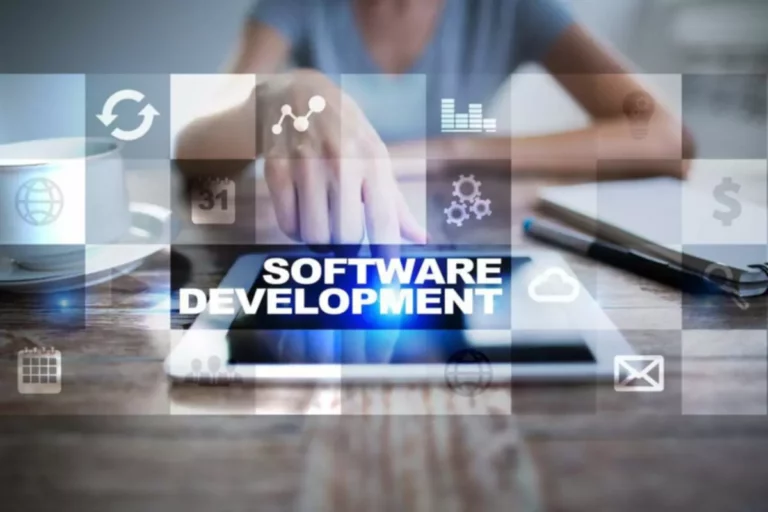However embedded software is often less visible, but no less complicated. Unlike application software, embedded software has fixed hardware requirements and capabilities, and addition of third-party hardware or software is strictly controlled. Embedded systems are ubiquitous but relatively unknown to most consumers. Modern automobiles have up to 100 million lines of code in them and most of that is not in the infotainment system.
From pipeline monitoring in the oil & gas industry to network security devices designed to monitor and counter intrusion vulnerabilities, embedded computers are in use all around us. ” An embedded PC functions as part of a larger device or system, rather than being used as a standalone computer. Applications for embedded PCs range from industrial automation and in-vehicle computing to digital signage, robotics, and more. This means that tasks performed by define embedded systems the system are triggered by different kinds of events; an interrupt could be generated, for example, by a timer at a predefined interval, or by a serial port controller receiving data. Examples of properties of typical embedded computers when compared with general-purpose counterparts, are low power consumption, small size, rugged operating ranges, and low per-unit cost. Transportation systems from flight to automobiles increasingly use embedded systems.
Debugging embedded systems
In the automotive sector, AUTOSAR is a standard architecture for embedded software. Cooperative multitasking is very similar to the simple control loop scheme, except that the loop is hidden in an API.[3][1] The programmer defines a series of tasks, and each task gets its own environment to run in. When a task is idle, it calls an idle routine which passes control to another task. Embedded systems often reside in machines that are expected to run continuously for years without error, and in some cases recover by themselves if an error occurs. Therefore, the software is usually developed and tested more carefully than that for personal computers, and unreliable mechanical moving parts such as disk drives, switches or buttons are avoided.
- They can internally make use of instant access to any member of any role, although these services are not available to either principals or port agents.
- ULSI, or ultra-large-scale integration, refers to placing millions of transistors on a chip.
- Safety-critical systems like antilock brakes (ABS) in a car must react within milliseconds.
- As embedded systems get bigger, things that used to be only on general-purpose computers or even mainframes are now becoming common on embedded systems.
- A ship’s rudder without precise timing would not be able to reliably steer a ship.
- The other major problem with embedded chips was that they were so ubiquitous, with literally hundreds of billions of them installed in all kinds of equipment around the globe.
- Software developers that are more comfortable writing applications for PCs will find this more familiar as well.
You can gain embedded systems programming skills with a certificate in an online course like the University of Colorado Boulder’s Introduction to Embedded Systems Software and Development Environments. Embedded systems engineers possess a combination of technical and workplace skills. Then, the following sections sort technical skills into two categories—programming and design. Consider using the checklists below to identify areas of focus for your study. The sensor reads external inputs, the converters make that input readable to the processor, and the processor turns that information into useful output for the embedded system. All of these tasks are performed by the computer to improve the driving experience.
embedded systems programming
In the case of a Raspberry PI system on a chip, an SD card acts as the device’s hard drive and contains the code that runs on the device. The embedded OS makes the device’s hardware — such https://www.globalcloudteam.com/ as USB and HDMI ports — accessible to the application running on top of the OS. Usually, the hardware is 32 bit microcontrollers and SoCs with more RAM and flash than small-scale systems.

Often graphics processing units (GPU) and DSPs are included such chips. SoCs can be implemented as an application-specific integrated circuit (ASIC) or using a field-programmable gate array (FPGA) which typically can be reconfigured. A microcontroller is a single-chip VLSI unit which is also called microcomputer. It contains all the memory and I/O interfaces needed, whereas a general-purpose microprocessor needs additional chips to offered by these necessary functions. Microcontrollers are widely used in embedded systems for real-time control applications. Device drivers or Board Support Package (BSP) are the core software components that control a peripheral device and supports connectivity.
Embedded Systems – Overview
To ace this, the focus must be kept to implement a prototype and integrate futuristic technologies like MQTT, Big data, and cloud computing. Moreover, the user interface has to be taken into account for developing HMI (Human-machine interface) and GUI applications. Importantly, the embedded software has to be optimized for memory and power constrained Microprocessor and Microcontrollers.
Some of the bus controllers are Serial Buses (I2C, SPI, SMBus etc.), RS232, RS485 and Universal Serial Bus. The output devices are the indications or results that occur due to input events from outside the microcontroller. Examples of output devices are LCD, Touch screen, LED, Motors, Seven segment displays, Buzzer, Relays, etc.
Important Characteristics of an Embedded System:
This is essentially making it possible to debug the performance of the software as if it were running on an actual physical chip. Very large-scale integration, or VLSI, is a term that describes the complexity of an integrated circuit (IC). ULSI, or ultra-large-scale integration, refers to placing millions of transistors on a chip. Embedded computer systems go by many names (Box PC, Gateway, Controller, Industrial PC, etc.).

Wind River VxWorks, Embedded Linux and Android, and QNX are some of the top embedded operating systems for commercial and industrial applications. People commonly wonder how an embedded system works since there is a high need for complex product technology, which provides opportunities for embedded software developers. In contrast to a desktop PC, which loads or runs applications, an embedded operating system is built for fewer tasks and typically handles a single application on a device. Embedded systems are designed to perform a specific task, in contrast with general-purpose computers designed for multiple tasks. Some have real-time performance constraints that must be met, for reasons such as safety and usability; others may have low or no performance requirements, allowing the system hardware to be simplified to reduce costs. An operating system is a system software that manages resources like memory, I/O (Input-Output) management, etc.
Embedded System Applications
Embedded software helps the machines in areas such as temperature control, machinery control, robotics, and others. Hardware includes the chips, wires, circuit boards, buttons and displays. Middleware that has been tightly integrated and provided with a particular operating system distribution.

If you have not yet worked on an independent project that you can use for your portfolio, consider enrolling in a Guided Project. For example, the University of Colorado Boulder offers an online Real-Time Project for Embedded Systems. You can read 10 more ways to enhance your resume in the article below. When you think of a computer, you might picture a big, rectangular black box with cords that protrude from the back. These consumer PCs also have vents cut into the sides to allow airflow to cool the internal components. Common examples of embedded monolithic kernels are embedded Linux, VXWorks and Windows CE.
What are the benefits of using an embedded computer?
The beauty is that it is invisible to the user, delivering a wealth of experience. Here are some of the applications of the embedded system which use a powerful operating system (OS) like Embedded Linux, Android, and Windows CE. An embedded system can be a small independent system or a large combinational system. It is a microcontroller-based control system used to perform a specific task of operation. Currently, there are nearly 50 billion devices that work on embedded software. This also means that there is increased demand for embedded system development.